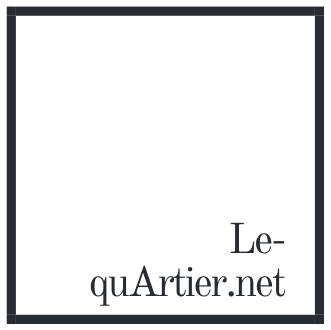JACQUES VILLEGLÉ
[English Below]
Jacques Villeglé
France 1926, vit à Paris
Cette exposition rend hommage à un artiste né à Quimper qui, depuis près de 60 ans, contribue à redéfinir les contours de l’œuvre d’art. Elle propose une traversée dans l’œuvre de celui qui a suscité l’irruption de la rue dans l’espace d’exposition. Depuis l’immédiate après-guerre, au moment où Jacques Villeglé élabore ses premières sculptures avec le fruit de ses collectes de déchets et d’objets abandonnés sur les plages de Saint-Malo, son travail artistique ne cesse d’entretenir une relation intense avec une perception du monde saisie dans sa réalité la plus brutale*. À partir de 1949, en prélevant de manière systématique des lambeaux d’affiches arrachés aux murs de la ville, il invente un mode opératoire inédit qui donne naissance à un nouveau type d’œuvres. Cette appropriation radicale d’un élément des plus quotidiens permet à l’artiste de saisir l’esprit du temps ; le reflet d’une société de communication qui s’exprime avant tout par le biais de l’actualité et par l’omniprésence des médias. Que ce soit par l’invention d’un alphabet sociopolitique constitué à partir de symboles, de codes, de sigles empruntés aux graffitis contestataires et subversifs, ou bien encore par le transfert dans l’espace d’exposition d’affiches lacérées, les œuvres de Jacques Villeglé révèlent au grand jour la dimension politique de nos communautés urbaines. Parce qu’elles sont spontanées, anonymes et collectives, ses affiches aux images fragmentaires et à la typographie éclatée proposent au spectateur de s’immerger dans un espace fictionnel autant que poétique.
* Ce qui l’amène, à partir de 1960, à être associé au Nouveau Réalisme avec Arman, François Dufrêne, Raymond Hains, Yves Klein, Martial Raysse, Daniel Spoerri, Jean Tinguely, sous la férule du critique d’art Pierre Restany.Jacques Villeglé
Born in France in 1926, now lives in Paris
This exhibition is a homage to Jacques Villeglé, born in Quimper. For nearly sixty years, his work has played a role in redefining what constitutes a work of art. The exhibition takes the visitor through the work of an artist who was instrumental in bringing the streetscape into the space of the exhibition. Jacques Villeglé began collecting objects lost or washed up on the beach at Saint-Malo for use in his earliest sculptures shortly after the Second World War. Since then, his art has always revealed an intense relationship with his perception of the world at its most brutally realistic*. From 1949 onward, Jacques Villeglé began systematically collecting scraps of posters torn from walls around town, inventing a brand new artistic practice which in turn gave rise to a new type of work of art. This radical re-appropriation of an otherwise ordinary material enabled him to capture the spirit of the times and the image of a society driven by communication which expressed itself above all through its obsession with current affairs and the omnipresence of the media. Jacques Villeglé’s works – from his invention of a socio-political alphabet drawing on symbols, codes, and acronyms borrowed from subversive and counter-cultural graffiti, to his transfer of torn posters from the street to the exhibition space – highlight the political dimension of our urban communities. His torn posters, with their fragmented images and dislocated typography, are spontaneous, anonymous, and collective ; they invite the visitor to lose himself in a space that is as fictional as it is poetic.
* This led him to be associated with New Realism from 1960 onward, with artists like Arman, François Dufrêne, Raymond Hains, Yves Klein, Martial Raysse, Daniel Spoerri, and Jean Tinguely, under the guidance of the art critic Pierre Restany.
